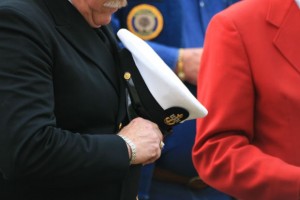 WASHINGTON — The U.S. Navy has become the next branch of the military to release guidelines on how it will handle those who wish to present themselves as the opposite gender.
WASHINGTON — The U.S. Navy has become the next branch of the military to release guidelines on how it will handle those who wish to present themselves as the opposite gender.
“[N]o later than 1 July 2017, the Navy and Marine Corps will begin accessing transgender applicants who meet all standards,” the 11-page document, released on Monday, reads.
Beginning Oct. 1, sailors were to be permitted to pursue what is called a gender transition as long as they were diagnosed with Gender Dysphoria by a military physician.
“Sailors and Marines with a diagnosis from a military medical provider indicating that gender transition is medically necessary will be provided the medically necessary care and treatment,” the guidance states.
However, “[a] history of gender dysphoria is disqualifying, unless, as certified by a licensed medical provider, the applicant has been stable without clinically significant distress or impairment in social, occupational, or other important areas of functioning for 18 months.”
Military.com notes that service members who seek to identify as the opposite gender will be held to the same physical readiness standards for that gender.
“For example, male sailors between the ages of 20 and 24 max out the PRT with 87 push-ups, a 1.5-mile run in 8 minutes, 30 seconds or less, and a 500-yard swim in six minutes, 30 seconds,” it outlines. “Women in the same age group need to complete only 48 push-ups, a 1.5-mile run in 9 minutes, 47 seconds, and a 500-yard swim in seven minutes, 15 seconds to max out.”
They will also be held to the same weight standards for men or women, meaning that some male sailors who seek to identify as females may need to lose weight to fall within the maximum weight allowed for ladies.
The chief of Naval operations and the commandant of the Marine Corps may establish policies regarding what protocol a commander must follow “to minimize impacts to the mission and ensure continued unit readiness in the event that a transitioning individual is unable to meet standards or requires an ETP during a period of transition.”
“Any such actions available to the commander or commanding officer will consider and balance the needs of the individual and the needs of the command in a manner comparable to the actions available to the commander or commanding officer in addressing comparable service member circumstances unrelated to gender transition,” the guidelines state.
Training on the policies is expected to begin this month.
The move comes just weeks after the U.S. Air Force likewise released a memo on how the branch will accommodate “transgender” airmen in matters of dress, physical fitness, and restroom and shower use.
As previously reported, last in September, the U.S. Department of Defense also released a handbook outlining how the military is to accommodate those who identify as transgender.
“Transgender Service in the U.S. Military: An Implementation Handbook” was released on Sept. 30 “to assist our transgender service members in their gender transition, help commanders with their duties and responsibilities, and help all service members understand new policies enabling the open service of transgender service members.”
“You should be sensitive to the use of pronouns when addressing others,” it states. “This will vary by individual and unit. If there is ever any question about pronoun usage, do not hesitate to ask the service member how they wish to be addressed.”
Become a Christian News Network Supporter...


